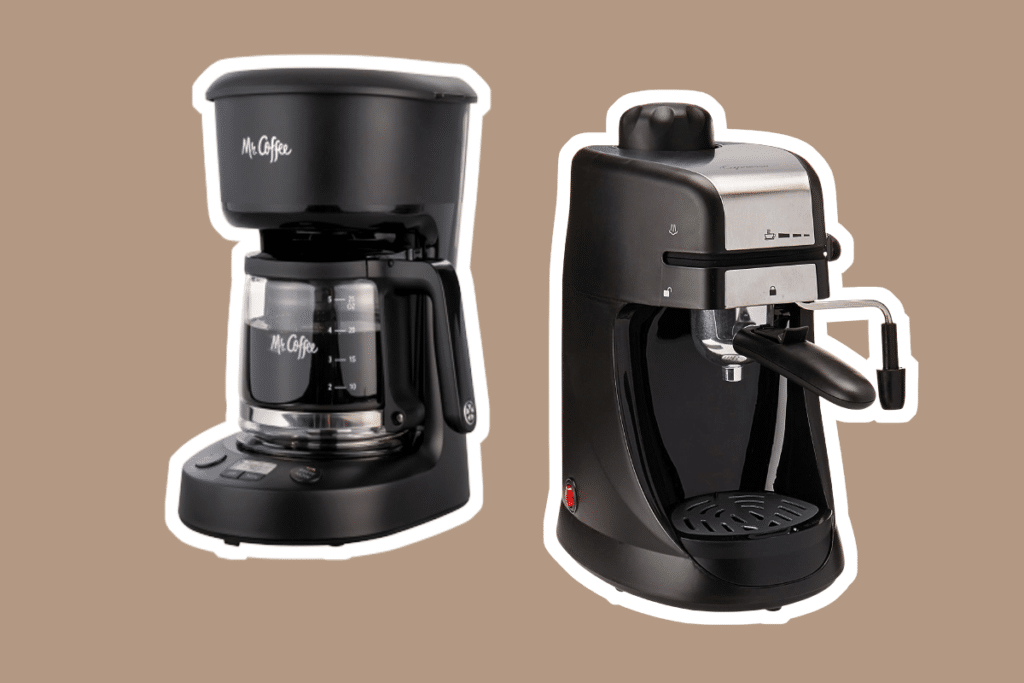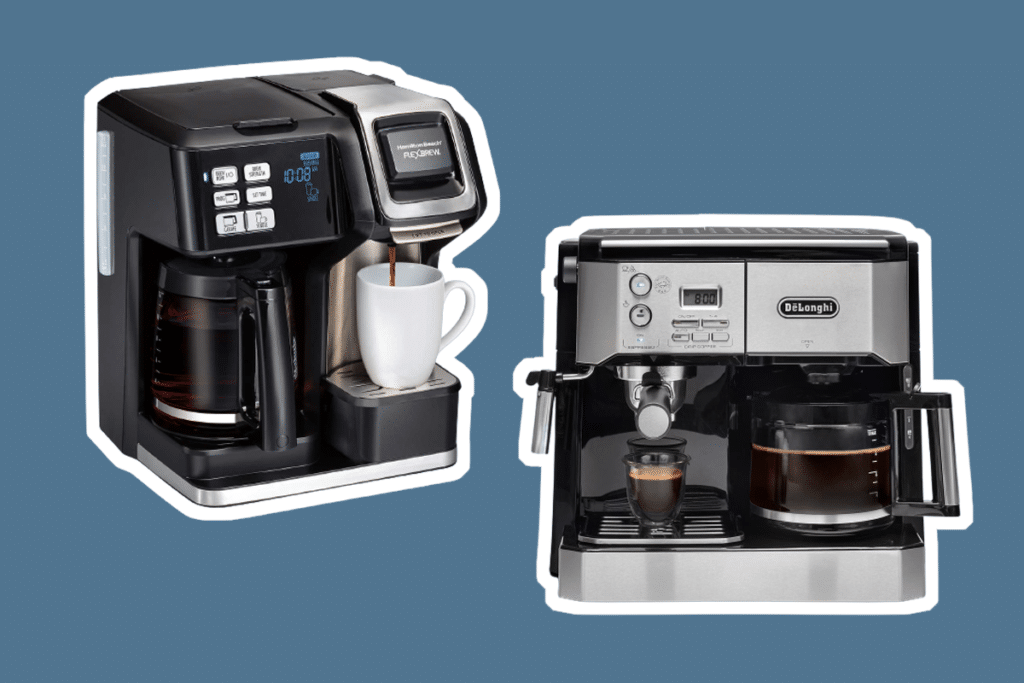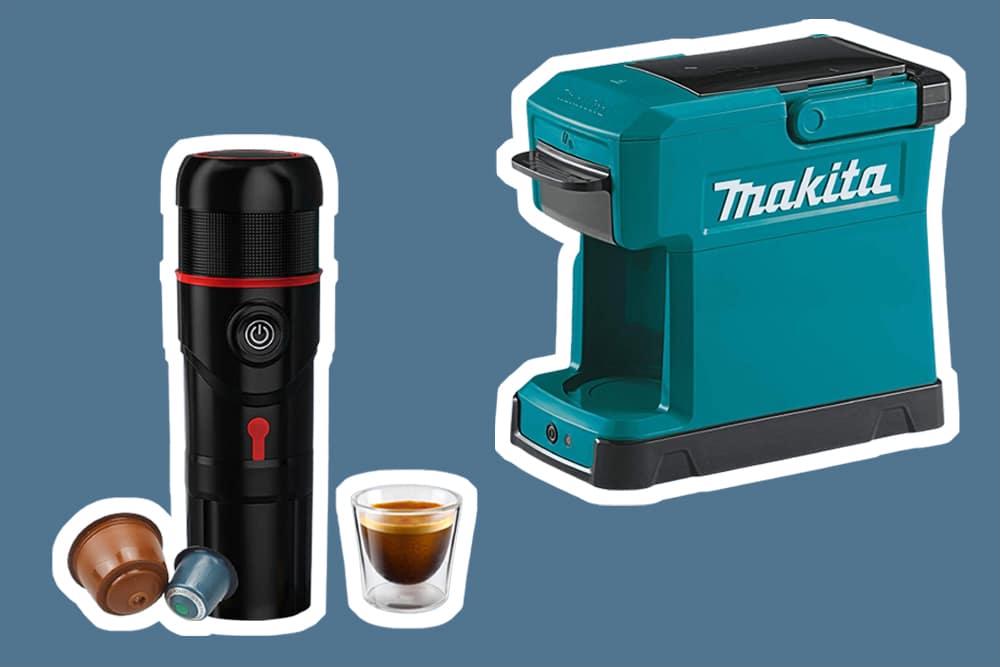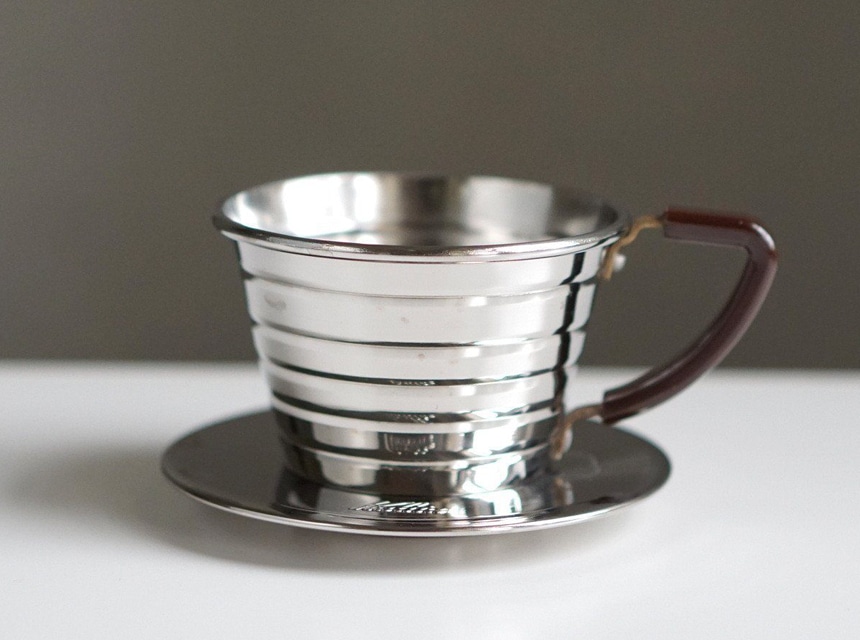

If you have deep respect for coffee, then the way you brew yours is very important. You also must have gotten wind of the Chemex vs. French press debate among coffee connoisseurs. If you don’t need to brew coffee for a crowd every day, then both Chemex and French press are viable options for getting top-quality coffee. Moreover, they are both reasonably priced and rely on simplicity to get their job done.
There are a few notable differences between the two. Although their brewing processes both begin with a medium or coarse grind, they produce entirely distinct cups of coffee because of the difference in their extraction methods. If you are the light, crisp, but flavorful coffee lover, then Chemex suits you best. On the other hand, if you gravitate toward heavy bodied, darker brews then the French press is your best bet. There is a lot to consider before choosing either of the brewing methods. Let’s take a closer look at each of them.
A French press is a brewer that features a plunger attached to a lid that has a mesh filter and a brewing chamber. It comes in different sizes ranging from 8 to 36 ounces. You can even get yourself a portable French press if you are an outdoorsy or an on-the-go person. The brew chambers of the French press are mostly made from plastic, stainless steel, glass, or ceramic.
According to many expert reviews the Bodum Columbia remains the sturdiest thermal French press coffee maker Trusted Source Who Made That French Press? “From the beginning, the French devoted more attention than any other people to coffee brewing,” William Harrison Ukers wrote in “All About Coffee,” published in 1922. www.nytimes.com . It boasts a rugged double-wall stainless steel construction and can make up to 8 cups of coffee in a matter of minutes. Here are other units worth considering if you are on the search for the best French press.
The French press was designed and patented by Italians but it gained popularity in French cafes and Kitchens shortly before spreading across Europe. It found its way to the US in the 1920s. It is considered one of the most accessible methods of manual brewing. In fact, it is popular because of its easy accessibility, affordability and ease of use. You can get a French press from the mainstream stores.
The brewer produces a full-bodied oily coffee that suits anyone who loves to wake up to a cup of heavy and robust coffee. Industry professionals recommend using darker roasts with a French press to achieve a good accent for the full-bodied, robust coffee it produces. A medium to dark roast like the Arabica would suffice.
Brewing coffee in a French press begins by pouring 200 degrees Fahrenheit hot water over coarse coffee grounds. The grounds should be soaked before being allowed to bloom. Blooming is when the coffee grounds release trapped gases that result in a savory aroma.
After the coffee grounds bloom, you should break the crust by stirring with a wooden spoon. Pour the remaining hot water over the remaining coffee grounds then let it sit for 3 to 4 minutes before drinking it.
Chemex is a bit more complex. It is considered a work of art and has a long and storied history. It was invented by an American chemist in 1942. This is evidenced by its rustic and scientific design. The elegant coffee preparation device constitutes a simple glass carafe, a polished wood collar with leather tie, and bonded filter
The Chemex classic series is the most popular Chemex coffee maker out there. It is a top preference for many coffee connoisseurs because it allows the user to cover coffee and even refrigerate it without losing flavor.
Using the Chemex is very simple but requires a lot of finesse. It works through the process of cold filtering which essentially involves pouring a solution into a funnel then allowing gravity to remove the liquid. Cold filtering is a terminology in Chemistry.
Chemex is also popularly known as a pour over. If you are not sure if this type of coffee-making device is suitable for your needs, we recommend you to read our review of the best pour over coffee makers make your choice.
The device is made of glass and it comes in various sizes ranging from 3 to 8 cups. One of the main distinguishing factors between a French press and Chemex is that the latter uses a paper filter to make coffee.
To use Chemex, you should begin by adding medium or coarse coffee grounds to a Chemex-specific paper filter. You must use a Chemex-specific filter because of its unique shape. A regular coffee filter wouldn’t do because it isn’t the right shape and it is not thick enough for the Chemex.
The next step is to soak the coffee grounds with 200 degrees Fahrenheit hot water. Allow the grounds to bloom for about 30 minutes then add the remaining water slowly in swirling circular motion to cover the grounds evenly. You should spend about 4 minutes on the entire process.
| French press | Chemex | |
| Brewing type | Seeping | Dripping |
| Brewing time | Around 5 min | Around 4 min |
| Brew strength | Full bodied | Rich |
| Ease of use | Easy | Hard |
| Cleaning easiness | Hard | Easy |
| Brew capacity | 1-4 cups | 3-8 cups |
| Materials | Glass, stainless steel, plastic | Glass |
| Beans grind | Coarse | Medium coarse |
Here is a French Press VS. Chemex showdown that shows how the two methods size up against each other in terms of crucial coffee-making aspects like brewing strength, time and versatility.
Chemex- it is entirely made of glass.
French press- its build consists of a plunger attached to a lid, a brewing chamber and a mesh filter. The brew chamber can be made of glass, stainless steel, plastic, or ceramic.
Winner-The French press. It has a less fragile construction that is highly portable.
Both Chemex and French Press are simple coffee making methods. However, they both have aspects that need extra effort during the brewing process.
Chemex- the brewing process is very simple but requires finesse to make the best cup of coffee. All you have to do is heat the water and pour it through the filter that has your coarse coffee grounds. Wait for the grounds to bloom before adding more water.
French Press- the brewing process is very straightforward and does not require a filter. All you have to do is add hot water to your coffee grounds then wait for about 3 or 4 minutes before pressing the plunger to pour the coffee.
When it comes to ease of brewing the 2 methods tie. In terms of supplies needed for brewing, French press wins as it doesn’t require a filter.
Both the Chemex and French press use medium coarse coffee grounds in their brewing process. The only difference between them is the Chemex delivers incredibly clean coffee while the French press delivers coffee with sediments at the bottom.
Also, since the French press doesn’t use filters, you would have to pay more attention in the coffee grinding process to achieve a good coarse ground. The type of grinder you use also matters. Look up the best coffee grinder for French press and Chemex for a convenient, even grind every time.
Chemex- the Chemex produces a light, crisp but flavorful coffee without oils.
French press- true to its name, the French press ‘presses’ steeped coffee grounds to extract as much rich flavor as possible. It produces a richer, full-bodied brew.
This category has no winner as it is a matter of personal preference. If you love bright, clean but flavorful coffee you should invest in the Chemex and if you love a rich full-bodied brew then you should get the French press.
There are days when you’ll have enough time to make yourself a good cup of coffee but most days you won’t have time. Nevertheless, you will need a perfect cup of coffee.
Chemex: The entire coffee making process with the Chemex is about 5 to 6 minutes long. The brewing time is 4 minutes then filter setup, rinsing and blooming will take 1 or 2 minutes.
French press: the entire coffee making process with the French press is 3 to 4 minutes long. This is because you don’t need set up a filter or pre-heat the brewer and cup if you are in a hurry.
The French press is the winner when it comes to brewing time. The 2 minutes difference sounds like very little time but you can dedicate it to brewing to get a stronger brew.
Chemex- Since it uses a filter, it produces clean sediment-free coffee with, less bitterness, low acidity, and no oils. However, it is the oils that provide part of the coffee’s flavor profile. Although it produces a clean cup of coffee with delicate notes, some people may find the Chemex coffee too mellow.
French press- the French press does not use a filter and therefore produces a full-bodied rich flavor because it allows oils and fine particles to pass through. The sediments at the bottom of the carafe are a huge turnoff for most coffee drinkers.
There’s no winner for this category as it depends on your personal preference.
Chemex- the coffee-making device has a laboratory equipment inspired design. The simple glass carafe and polished wood collar with leather tie gives it a modern and chic appeal that would aesthetically upgrade any coffee station.
French press- it comes in a more portable design that is more of functionality than beauty.
Winner- if you mind aesthetics, then the Chemex is your plug, but if you are looking for ruggedness and portability, the French press is your best bet.
When it comes to price, the French press is the more affordable option. The purchasing cost of a Chemex is deemed more expensive than all the other pour-over methods. Plus, it comes with the additional cost of buying filters.
Chemex- the Chemex brewing process results in a sediment-free brew which makes cleanup breeze. You wouldn’t spend more than 30 seconds cleaning. The only challenge would be its shape.
French Press- the French press brewing process results in a brew with coffee grounds at the bottom as it allows oils and fine particles to pass through its mesh. You will spend no less than 3 minutes cleaning up.
Chemex carries the day when it comes to cleaning easiness.
In terms of material quality, there is no clear winner because Chemex is only made of glass while French press can be made of plastic, glass, stainless steel or ceramic. If you get a French press that is made of glass, then it’s a tie with Chemex. If you get one made of plastic, Chemex wins. If you get one made of stainless steel then it wins in terms of longevity and portability. Once again, it all comes down to your preference.
Chemex- You can only the Chemex to make coffee.
French Press- besides coffee, you can use the French press to make cold brew and loose tea.
French press wins the versatility title.
The Aeropress Trusted Source The Invention of the AeroPress Among coffee aficionados, the AeroPress is a revelation. A small, $30 plastic device that resembles a plunger makes what many consider to be the best cup of coffee in the world. priceonomics.com is another popular manual coffee brewing method. The device constitutes a brewing chamber, a plunger, and a filter attachment. It uses a paper filter just like Chemex and it rests on your cup. Its brewing process is similar to that of the French press as it works by steeping coffee then pressing down a plunger. This delivers a flavorful clean tasting coffee.
The aeropress is more versatile than Chemex and French press because it allows you to control the coffee grind, extraction time, coffee to water ratio and pressure. Its design allows large variations in each of these parameters, thus, you can easily make regular coffee, Americano, and coffee concentrate which is somewhat similar to espresso.
Pros
Cons
Our detailed Chemex vs. French press showdown clearly depicts that the coffee brewing methods are both excellent options if you want to channel your inner barista. If you have some change, you can consider adding both to your kitchen arsenal if not, then you’d have to weigh your options. A French press is a solid option if you are looking for a portable coffee maker that brews coffee fast. Also, if you love to wake up to a full-bodied, darker and bitter coffee, the French press is your prime bet.
On the other hand, if you love drip coffee and take your time to make a heavenly flavorful cup, then you should consider Chemex. It takes time and needs finesse but the result is fine tasting, smooth and clean coffee. At the end of the day it all comes down to preference. But Chemex hits all the points when it comes to brew quality, easy cleanup and appealing design.





